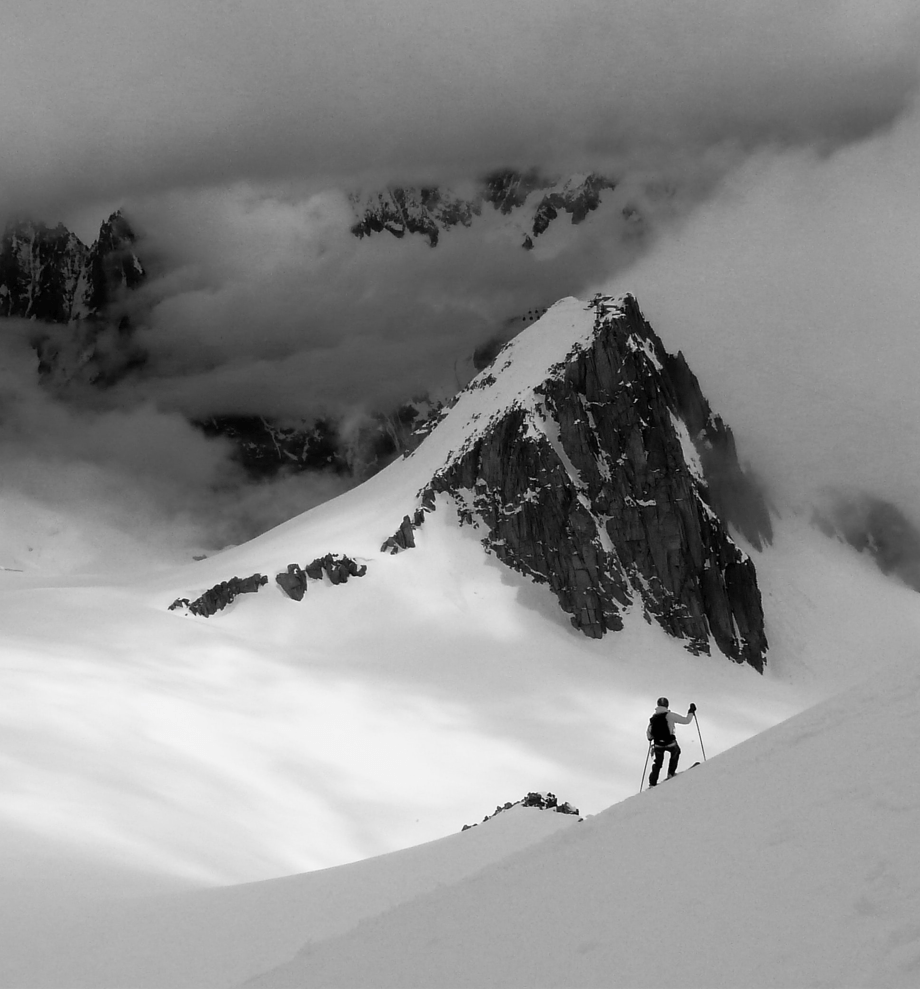
Introduction:-Mountain climbing, a challenging and exhilarating pursuit, is an activity that has captivated the hearts of adventurers for centuries. Today, the world of sports mountain climbing has evolved into a dynamic and diverse arena, where climbers push the boundaries of human potential, exploring towering peaks and remote wilderness. In this 1200-word exploration, we will delve into the world of sports mountain climbing, uncovering the history, techniques, equipment, and some of the most awe-inspiring climbing destinations. Whether you are a seasoned mountaineer or a novice looking to begin your journey, this comprehensive guide will provide you with valuable insights and inspiration.
The Rich History of Mountain Climbing
Mountain climbing has a rich history that dates back centuries. It began as a means of exploration, scientific discovery, and an enduring quest for adventure. Early mountain climbers often faced treacherous terrain without the modern equipment and knowledge available today. One of the most famous early alpinists was Edward Whymper, who, in 1865, became the first person to conquer the Matterhorn in the Alps. His success marked a significant milestone in the history of mountaineering.
The transition from exploration to sport occurred during the late 19th and early 20th centuries when recreational climbers began to scale peaks for the sheer joy of the challenge. As the sport grew in popularity, organizations like the Alpine Club in the UK and the American Alpine Club in the United States were founded to promote mountaineering as a legitimate pastime.
Today, sports mountain climbing continues to evolve, with climbers setting new records and tackling increasingly difficult ascents. The sport’s rich history serves as a testament to humanity’s enduring desire to explore and conquer the world’s tallest and most formidable peaks.
Techniques and Skills
Sports mountain climbing is more than just conquering summits; it involves a complex set of techniques and skills that climbers must master to ensure safety and success. Here are some essential aspects of mountain climbing:
-
Knot Tying: Climbers need to be proficient in tying various knots, including the figure-eight knot, double fisherman’s knot, and bowline knot, which are essential for securing ropes, slings, and harnesses.
-
Rope Management: Managing ropes is crucial for safety. Techniques like belaying, rappelling, and using ascenders and descenders are fundamental for a climber’s toolkit.
-
Anchoring: Understanding how to place and use anchors, such as nuts, cams, and pitons, is essential for securing ropes and gear during climbs.
-
Rock and Ice Climbing Techniques: Different types of climbing require specific techniques. Rock climbing involves using holds, cracks, and friction to ascend, while ice climbing demands tools like ice axes and crampons to navigate frozen terrain.
-
Route Finding: Navigating a mountain’s terrain and identifying the best path to the summit is a skill that takes years to master. This skill requires a combination of experience, knowledge of the environment, and intuition.
-
Safety and Rescue: Climbers must be well-versed in safety protocols, including avalanche awareness, self-arrest techniques, and rescue procedures for themselves and their climbing partners.
-
Physical Conditioning: Maintaining physical fitness and endurance is essential for handling the strenuous demands of climbing. Strength training, cardiovascular fitness, and flexibility are crucial for success.
-
Mental Resilience: Climbing often involves facing fear, uncertainty, and extreme physical challenges. Developing mental resilience is as important as physical fitness.
Equipment
The right equipment is a lifeline for mountain climbers. The choice of gear can significantly impact the safety and success of a climb. Here are some of the essential pieces of equipment:
-
Climbing Harness: A comfortable and secure harness is worn by climbers to attach themselves to ropes and protection.
-
Helmet: Protecting the head from falling rocks or ice is paramount in mountain climbing.
-
Ropes: Dynamic ropes, static ropes, and specialized cords are used for various purposes, such as leading, belaying, and rappelling.
-
Carabiners: These are crucial for attaching ropes and other equipment securely.
-
Protection: Nuts, cams, pitons, and other anchoring devices are used to secure ropes and climbers to the rock or ice.
-
Crampons: These metal spikes attach to climbing boots and provide traction on icy surfaces.
-
Ice Axes: Essential for ice climbing, these tools help with balance and stability on frozen terrain.
-
Clothing: Climbers require specialized clothing designed for temperature regulation, moisture management, and durability.
-
Belay Devices: Mechanical devices like the ATC (Air Traffic Controller) or Grigri help climbers control rope tension while belaying.
-
Backpack: A climbing-specific backpack is essential for carrying gear, clothing, food, and water.
-
Climbing Shoes: Climbing shoes provide the necessary grip and precision on the rock.
-
Sleeping Bags and Tents: For multi-day expeditions, climbers need lightweight and warm sleeping bags and tents.
-
Avalanche Safety Gear: For climbers tackling snowy peaks, avalanche beacons, probes, and shovels are vital for safety.
-
GPS and Navigation Tools: These tools help climbers stay on course and find their way in challenging terrain.
Choosing the right equipment is a vital step for both novice and experienced climbers. Proper gear can enhance safety and performance, making it an essential aspect of the sport.
Famous Climbing Destinations
Sports mountain climbing offers enthusiasts a wide range of stunning destinations. Here are a few famous locations that have captured the imagination of climbers worldwide:
-
Mount Everest: The world’s tallest peak, standing at 29,032 feet (8,849 meters), Everest is an iconic destination for climbers. Scaling this formidable mountain is a dream for many, though it presents significant challenges due to extreme altitudes and harsh weather.
-
The Alps: Europe’s famous mountain range offers a variety of climbing experiences, from classic rock routes in the Dolomites to icy ascents in the Mont Blanc Massif.
-
Yosemite National Park: Located in California, Yosemite is renowned for its big wall climbing. El Capitan, one of the park’s most famous features, is a mecca for rock climbers seeking challenging multi-day ascents.
-
Patagonia: The stunning peaks of Patagonia, straddling Argentina and Chile, offer a unique and remote climbing experience. Cerro Torre and Fitz Roy are among the area’s most iconic peaks.
-
Denali: Located in Alaska, Denali is the highest peak in North America. Climbers come to test their skills on its icy slopes and challenging conditions.
-
The Himalayas: Beyond Everest, the Himalayas offer a wealth of climbing opportunities. Peaks like K2, Annapurna, and Kangchenjunga challenge climbers with their extreme altitudes and technical demands.
-
The Andes: Stretching along South America’s western coast, the Andes provide countless opportunities for climbers. Aconcagua, the highest peak outside Asia, is a popular destination.
-
The Tetons: The Grand Teton in Wyoming is a classic destination for alpinists in the United States. The park offers a variety of climbing experiences, from easy hikes to challenging technical routes.
-
The Rockies: The Rocky Mountains span North America, offering a range of climbing options. The Canadian Rockies, in particular, are known for their stunning landscapes and challenging climbs.
-
The Karakoram Range: This mountain range, spanning the borders of Pakistan, China, and India, boasts some of the world’s most challenging peaks, including Broad Peak and Gasherbrum II.
Each of these destinations offers unique challenges and rewards, catering to climbers with various skills and aspirations.
Safety and Ethical Considerations
Mountain climbing is an inherently risky activity, and safety should always be a top priority. Climbers must be prepared to make responsible decisions to ensure their well-being and that of their fellow climbers. Here are some safety and ethical considerations:
Elevate your game with our sports content Ice hockey and Ice swimming. From rules to gear, find all you need to know about your favorite sports
-
Preparation: Adequate training, physical conditioning, and knowledge of the chosen route are essential for a safe climb.
-
Risk Assessment: Climbers should continuously assess risks such as avalanches, rockfall, and weather conditions and be prepared to turn back if necessary.
-
Leave No Trace: Practicing Leave No Trace principles ensures that climbers minimize their impact on the environment, preserving the natural beauty of climbing destinations.
-
Environmental Responsibility: Climbers should respect local regulations and wildlife, and support conservation efforts in climbing areas.
-
Teamwork: Effective communication and collaboration with climbing partners are crucial for safety.
-
Altitude Sickness: Climbers should be aware of the symptoms of altitude sickness and be prepared to descend if they experience severe symptoms.
-
Emergency Preparedness: Carrying necessary equipment and knowing how to use it, as well as having a communication plan in case of emergencies, is vital.
Conclusion
Sports mountain climbing is a challenging and rewarding pursuit that allows enthusiasts to explore some of the world’s most breathtaking landscapes. From the rich history and evolution of the sport to the techniques, equipment, famous climbing destinations, and safety considerations, this guide provides an overview of the world of mountain climbing.
Whether you’re an experienced mountaineer seeking your next adventure or a beginner looking to embark on your first climb, the world of sports mountain climbing offers a lifetime of opportunities for exploration, personal growth, and a profound connection with nature. Remember, climbing is not just about reaching the summit; it’s about the journey, the challenges, and the extraordinary experiences that come with it.




